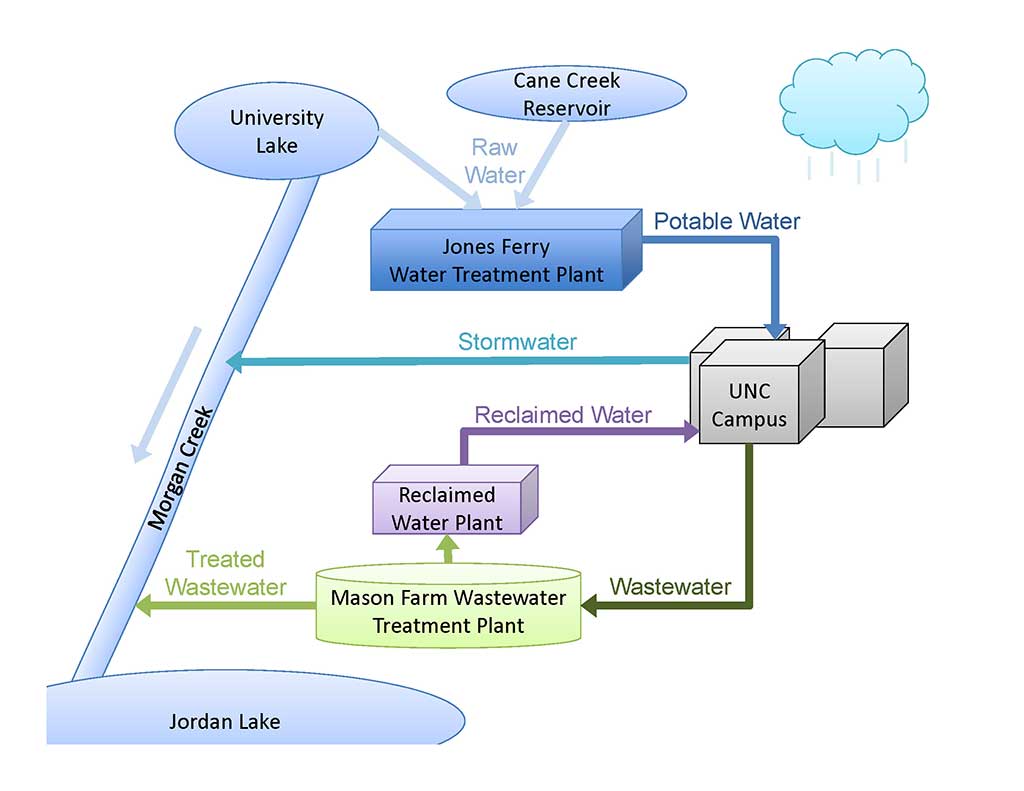Water Resources Overview
Water resources at UNC-Chapel Hill are categorized as stormwater, potable water, reclaimed water and wastewater. Stormwater drainage from rainstorms is collected in a stormwater drainage system owned and maintained by the University. Potable water and reclaimed water are provided for the campus by the Orange Water and Sewer Authority (OWASA). Wastewater from sinks, toilets, and other University facilities is collected in OWASA’s sewer system and drained from campus for treatment at their Mason Farm Wastewater Treatment Plant. These water resources interact, as shown in the graphic below.
Stormwater that falls in the Morgan Creek watershed upstream of University Lake fills the lake for use as a reservoir by OWASA. OWASA treats water from University Lake and another reservoir to provide potable water to UNC-Chapel Hill and other customers. Meanwhile, stormwater that falls in the Morgan Creek watershed downstream of University Lake, including on most of the University campus, discharges to Morgan Creek without becoming part of the OWASA water supply. Wastewater from the University and other OWASA customers is treated, and then most of it is discharged further downstream on Morgan Creek. A portion of the wastewater is retained and further treated to become reclaimed water. This water is re-used for non-potable uses including irrigation, toilet flushing and cooling towers.
Managing these water resources as an interconnected systems is a growing trend, sometimes called “One Water” or Total Water Management.

